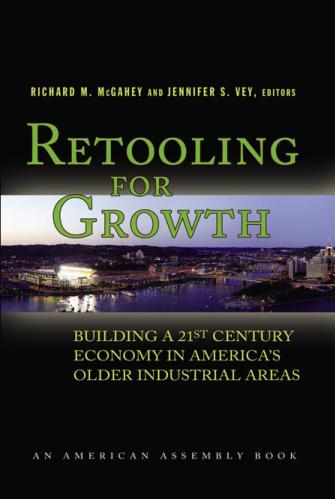To kick off the Future Development blog in 2020, we present the second in a four-part series on the future of development.
At the beginning of each new year, UNICEF organizes a global campaign to celebrate the birth of the year’s first babies. This time, we cheered the arrival of 2020 and of a little over 392,000 new babies. The average life expectancy of a girl born today is 79.6 years—for a boy it is 76.2 years—which means that she and her peers will live to shape the rest of this century. And one thing is clear: These newborns of the decade will live in a fundamentally different world than the one their parents knew.
In most parts of the world, these newborns will grow up to be healthier, wealthier, and better educated than their parents. They will also live longer. Over the last two decades, life expectancy has already increased from 71 to 78 years, with the greatest gains made in emerging economies. The well-informed reader may wonder why these estimates are substantially higher than the projections often quoted from official sources such as national statistical agencies or the U.N.’s population division. The answer lies in the projection method. The traditional approach is period life expectancy estimates, which calculates the average age of people dying today. This stands in contrast to cohort expectancy estimates, which projects improvements in mortality throughout a person’s lifetime. The latter provides a more realistic estimate of life expectancy and results on average in almost 10 years more compared to period life expectancy estimates. This blog builds on the cohort life expectancy projections in population.io which were developed by the World Data Lab, together with the International Institute of Applied Systems Analysis (IIASA).
Almost two-thirds of today’s newborns will live to see the next century.
As we enter the third decade of the 21st century, the younger among us can realistically set their sights on 2100. Even though the average global life expectancy is still below 80 years, almost two-thirds of today’s newborns will live to see the next century: Once they survive the first years of their lives, they will have a significant chance to live through adulthood and into their 80s.
However, there are still wide differences across countries. A typical girl born in Singapore today can expect to live more than 97 years (until February 2117), while a boy born in Sierra Leone can only expect to live almost 40 years less (to just 58.5 years). The top three countries in terms of life expectancy are all in Asia—Singapore, Japan, South Korea—followed by European countries and Chile. The bottom 10 countries are all in sub-Saharan Africa (see Figure 1), even though life expectancy has been rising there as well.
Figure 1. Singapore vs. Sierra Leone: Living 39 years longer
Note: Life expectancy of babies born in January 2020; Source: Projections by Katharina Fenz, World Data Lab
In Europe and North America, as well as many parts of Asia, some 80 percent of new babies will live into the next century—almost nine out of 10 girls born in Europe! If we include all of the children born in previous years who also have a chance, there are more than 900 million people alive today, who can expect to live into the next century!
The dramatic progress embedded in these statistics is obvious to all of us, especially boomers who hail from the 20th century. And yet there is still significant scope to further increase the collective chance of humans to live long and healthy lives. To realize it, we need to better understand the causes of mortality: We need to know when people die, in which country, from which cause.
Some 50 years ago, most people died from diarrhea, malaria, tuberculosis, or simple respiratory diseases. One of the big successes of development since 1970 has been the sharp fall in communicable diseases, including AIDS, over the last decade. While communicable diseases are still the leading cause of death for children and young adults—mostly in Africa and Asia—they now account for “only” some 30 percent of all deaths in any given year, approximately 18 million. Among them, the greatest killers are respiratory diseases (3.5 million), diarrhea (1.5 million), AIDS and malaria (each approximately 1 million). Meanwhile the number of deaths from road accidents has risen to 1.3 million (Figure 2).
By contrast, noncommunicable diseases represent 70 percent of total deaths, of which heart disease is now the largest with 20 million deaths in 2019 (32 percent), followed by cancer with approximately 8 million (13 percent). While the growth in noncommunicable disease is a sign of aging, i.e., successful development, there is an increasing number of people in emerging markets who die from noncommunicable diseases as working adults. The prevention of these diseases, such as diabetes and cancer, in adulthood will be crucial.
Figure 2. Causes of death differ greatly when disaggregated by age
Source: Projections World Data Lab, based on IHME, Health Data visualizations, 2017
The health challenges that used to be confined to rich countries (heart disease, cancer, diabetes, and dementia) will start to play a bigger role across the globe. In fact, many emerging economies will experience a double burden of disease. Even though communicable diseases are on the decline, they remain elevated (e.g., in Kenya the No. 1 cause of death remains HIV/AIDS), while noncommunicable diseases and accidents are rising.
Disease and death will eventually and ultimately strike all of us. And yet they will do so very differently depending on our age, gender, and the part of the world we are born in. This is why a risk-based approach to public policy makes sense. In short: We need a better and more dynamic model for predicting at a granular level the risks that individuals will be exposed to most at each stage of their lives, wherever they are. Creating such a data model would be a great endeavor for the new decade.
Note: This blog builds on a book chapter “Living to 100?” in John Schroeter (ed): “After Shock: The World’s Foremost Futurists Reflect on 50 years of Future Shock—and Look Ahead to the Next 50” (February 2020).











Commentary
Living into the 22nd century
January 14, 2020